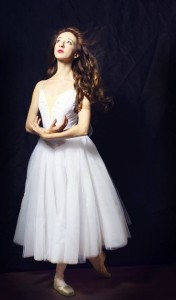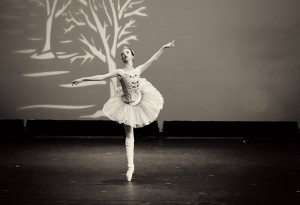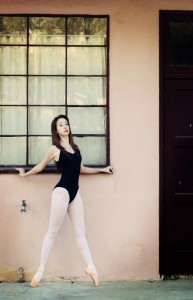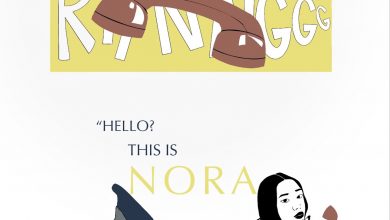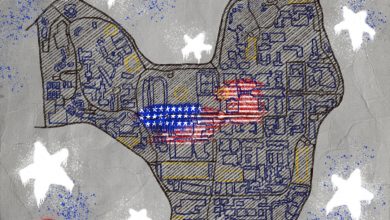Interview with Sarah Hartman: Reinventing Ballet from a Woman’s Perspective
Sarah Elizabeth Hartman is a San Francisco native, a ballerina, a choreographer, and the artistic director/ founder of Moirai Ballet. Her company is focused on creating new, original ballets that are both accessible and relevant to modern audiences. Sarah is working towards a double MA in Jewish Studies and Education at Hebrew College, and her first ballet, Echo & Narcissus, is set to premiere in March.
Q: When did you start doing ballet?
A: I started at age three, and it was actually because I had neurological difficulties. I wasn’t able to walk till after age two (which is very late, developmentally), and my mom had to take me to doctors and neurologists. The neurologist ended up recommending a physical activity to build my coordination and motor skills. As my mom says, “It was either karate or ballet, and you seemed too dainty and girly to be into karate, so I chose ballet!” Of course, my mom was a black belt in several martial arts disciplines, so I ended up learning some of that, too…
Q: Why did you decide to become a ballet dancer, professionally?
A: It was actually a very difficult choice for me. I always loved ballet, but also loved writing, reading, visual art, and music as well. In high school I had to sit down and figure out which to pursue. I realized that ballet was something I couldn’t do without, and that I wanted more than anything to make it my life. I still pursue all the other things, but in moderation with the rest of my ballet lifestyle.
Q: You are also pursuing a college education. What made you decide to do that?
A: It was definitely a confluence of factors. I’m a first generation American (my mom is from Italy), and she came to America and got a Master’s, and always raised my brother and I to be aware of the power of education. Education is what lifted my grandfather from destitute poverty in Hungary to being a psychiatrist in the United States. I always loved learning, so pursuing a higher education was just a natural step for me. I’m thrilled to be able to pursue it alongside ballet with the LEAP program through Saint Mary’s College. I think I would’ve gone back to school after my career anyway, if not for LEAP!
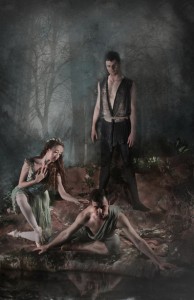
Q: Why did you become interested in choreographing?
A: A lot of dancers don’t start choreographing till much later, or seem to be afraid of it, and of the process. I was not one of those. Choreographing was always natural for me, and I would choreograph dances in my head constantly from a young age. The urge to create is a big one for me. I’m never satisfied with just dancing. I have to do both! Expressing my creativity through choreography has also helped me grow and learn so much about my own dancing; such as the movements I prefer, how to express them more passionately, and how to communicate stories. I encourage all dancers to explore choreography early–it is such a huge component of dancing!
Q: What do you hope to change about the ballet world with Moirai Ballet?
A: Oh, everything! I became disillusioned with the ballet world after spending a few years dancing for professional companies. It was either the same ballets over and over–some of which are great, but are often staged/re-staged without attention to detail or emotional impact–or it was a series of abstract ballets with no story, and nothing to say. The professional ballet world was really foreign to me in a lot of ways. Dancers and directors alike were often apathetic and turned off to the world around them. I didn’t understand it. The reason ballet has lost relevance is that, in large part, it shuts itself off from the rest of the world. Social issues, history, change, all of it–ballet either addresses 300 year old stories, or abstract things that the average person (or even myself) need a pre-show lecture to understand. I want to change that. I want to make ballet relevant. I want to tell powerful stories, real stories, of people with struggle, be it in love or revolution. I want ballet to become something anyone can go and see, and to FEEL something from afterwards. I also want to make ballet accessible in terms of pricing, too. As is, a ballet ticket averages a good $60 for a professional company with live orchestra. I can’t even afford it, and I’m a dancer! So flat rate tickets are another priority, that way anyone can come to a show, and sit wherever, and not have to worry that they’re not the “right kind” of person to be there.
Q: Do you think it’s important to have women in ballet — not just as dancers, but as choreographers and directors?
A: Absolutely. People outside of the ballet world are always gobsmacked when I tell them that its male dominated in terms of directors and choreographers. And it really is. Most directors and choreographers are men. I think women’s voices need to be heard in ballet–not just as pretty stage decorations or tools for male expression, but as WOMEN. There are so many stories and so many incredible perspectives from women, and to shut them out in the ballet world is just unacceptable to me. Women have advanced in most all other work places. Why not speak up in ballet as well?
Q: Would you say that your experience with ballet has pushed you towards feminism?
A: Without a doubt, yes. And in ways that are probably unexpected. Ballet encouraged me from a young age to embrace my more traditionally feminine side. I loved the delicacy of movement, the characters of classical ballet, and the exquisite beauty of the movements on the female body. On the other hand, being in the professional ballet realm, I had a fire in my belly. And I quickly learned that directors (all of mine were male, interestingly) were quick to try to put that out. They didn’t want my opinion, and actively punished me for it in many cases. Ballerinas were seen as tools, and I hated that. Most dancers aspired to be this kind of objectified muse for a male choreographer or director. I wanted my own voice heard, and being passive just wasn’t in the picture. It was frustrating, and I was so tired of seeing male dancers given more opportunities to create than females. Traditional and often very backwards views of how ballerinas should act and what they should want were–and are–very much alive in the ballet world. For some women that’s fine, but I want to make a place where ALL women are welcome, especially if they have strong opinions. I don’t believe that submissiveness should be a highly prized trait in the workplace–whether that’s ballet or otherwise.
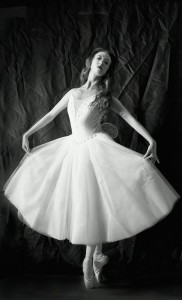 Q: Cultural appropriation has had a dominant presence in ballet. How do you feel about it and do you intend to change it?
Q: Cultural appropriation has had a dominant presence in ballet. How do you feel about it and do you intend to change it?
A: As someone who identifies as a woman of color, or WoC, I was faced with ballet’s rampant cultural appropriation from a young age. I grew up in a very ethnically diverse household, and stepping into the ballet world was always like crossing a threshold into another era. Ballets like La Bayadère, for example, are beautiful in their music and story. But the mockery of what Indian culture was thought to be in the 19th century is just awkward and clumsy. As a Jewish woman and the descendent of Holocaust survivors, I often feel physically ill hearing about/seeing ballets supposedly about the Holocaust, but they’re done by non-Jewish choreographers, performed by non-Jewish dancers, and contain little to no input from Jewish voices. I know it’s been standard practice in ballet to just make ballets about whatever without consulting anyone, but in this day and age, I don’t feel that there’s an excuse for it anymore. I also am of Rromani descent, and the constant image of the flagrant, cheap, promiscuous “gypsy” (which is an ethnic slur to Rroma and other ethnicities) is berating.
Thing is, the ballet world is so insulated that the cycle has continued unperturbed. I intend to completely reverse this. One of my future ballets tells the story of a Jewish family in Poland before, during, and after World War II/the Holocaust. It’s important to me to talk to actual survivors, and to tell real stories, and real Jewish experiences. Likewise, my composer, who is from China, is working with me to create ballets that tell stories from a unique Chinese perspective. No more corny dances with fingers up and pointed hats. We intend to humanize all cultures by making them a PART of the process of ballets. I think that’s the only place to start. You have to engage the community in the process, instead of just dictating what a culture is and isn’t–particularly when the creators/dancers are not a part of that culture in the first place.
Q: What do you enjoy besides ballet?
A: I’m pretty geriatric in my habits, for sure. I have three cats whom I adore! I used to volunteer for a feral rescue, and all of my kitties were rescues as well. They’re like my daughters! I am also a voracious reader. I read constantly, both fiction and nonfiction, and not just for fun. I think it’s vital to be exposed to ALL art forms in order to best grow within your own. I write occasionally too, and sketch and paint. I also knit and sew (sounding septuagenarian yet?), and have a penchant for cooking, baking, and crawling Spotify for funky indie music. Of course, grad school, teaching, and getting Moirai running keeps me pretty busy. But on most days you can find me either at home or on BART to San Francisco, knitting and browsing Tumblr on my phone.
Follow Moirai Ballet on Facebook!


